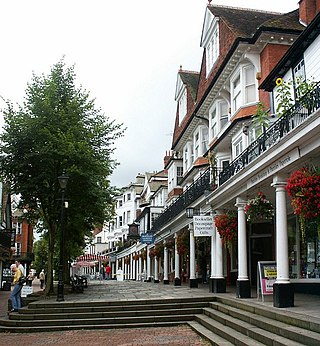
Royal Tunbridge Wells is a town in Kent, England, 30 miles southeast of central London. It lies close to the border with East Sussex on the northern edge of the High Weald, whose sandstone geology is exemplified by the rock formation High Rocks. The town was a spa in the Restoration and a fashionable resort in the mid-1700s under Beau Nash when the Pantiles, and its chalybeate spring, attracted visitors who wished to take the waters. Though its popularity as a spa town waned with the advent of sea bathing, the town still derives much of its income from tourism.

Decimus Burton was one of the foremost English architects and landscapers of the 19th century. He was the foremost Victorian architect in the Roman revival, Greek revival, Georgian neoclassical and Regency styles. He was a founding fellow and vice-president of the Royal Institute of British Architects, and from 1840 architect to the Royal Botanic Society, and an early member of the Athenaeum Club, London, whose clubhouse he designed and which the company of his father, James Burton, the pre-eminent Georgian London property developer, built.

Battersea Park is a 200-acre (83-hectare) green space at Battersea in the London Borough of Wandsworth in London. It is situated on the south bank of the River Thames opposite Chelsea and was opened in 1858.
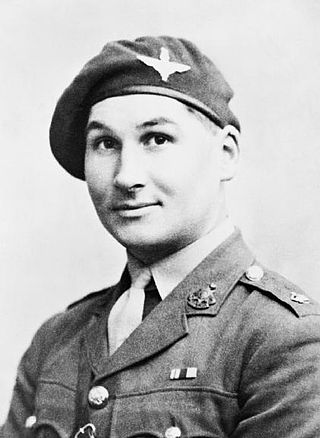
Captain Lionel Ernest Queripel VC was a British Army officer and an English recipient of the Victoria Cross (VC), the highest and most prestigious award for gallantry in the face of the enemy that can be awarded to British and Commonwealth forces.

Avenue House is a large Victorian mansion situated on East End Road in Finchley in the London Borough of Barnet.

Painshill, near Cobham, Surrey, England, is one of the finest remaining examples of an 18th-century English landscape park. It was designed and created between 1738 and 1773 by Charles Hamilton. The original house built in the park by Hamilton has since been demolished.
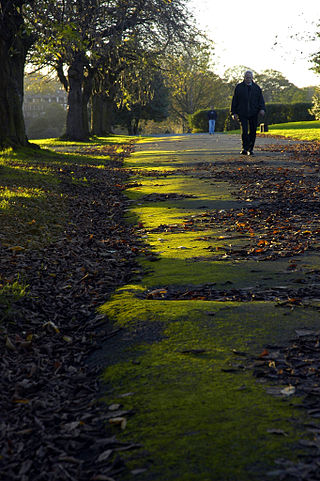
Armley Park is a large public park located next to Stanningley Road in Armley, on the outskirts of Leeds, in West Yorkshire, Northern England.
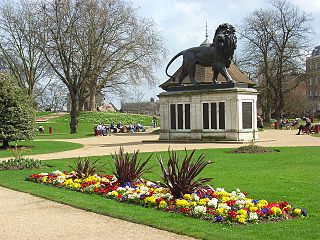
Forbury Gardens is a public park in the town of Reading in the English county of Berkshire. The park is on the site of the outer court of Reading Abbey, which was in front of the Abbey Church. The site was formerly known as the Forbury, and one of the roads flanking the current gardens is still known as The Forbury. Fairs were held on the site three times a year until the 19th century.
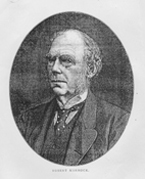
Robert Marnock (1800–1889) was one of the outstanding English horticulturalists and garden designers of the 19th century. He was considered by his contemporaries to be the best exponent of the Gardenesque school of landscape gardening.

Weston Park is a public park with an area of just over 5 hectares in the City of Sheffield, South Yorkshire, England. It lies immediately west of the City Centre, alongside the Weston Park Museum. It is situated next to the University of Sheffield Library, Geography and Firth Court buildings, and across the road from Sheffield Children's Hospital. Along with Crookes Valley Park and The Ponderosa it is one of the three Crookesmoor parks.

The Sturt Street Gardens is a central reservation running along Sturt Street, one of the main thoroughfares of Ballarat,. The formal gardens span 13 city blocks from Grenville Street in the east to Pleasant Street in the west, are 20 metres (22 yd) wide and cover an area of 2.87 hectares running east–west.

Sydenham Hill Wood is a ten-hectare wood on the northern slopes of the Norwood Ridge in the London Borough of Southwark. It is designated as a Local Nature Reserve and Site of Metropolitan Importance for Nature Conservation. With the adjacent Dulwich Wood, Sydenham Hill Wood is the largest extant tract of the ancient Great North Wood. The two woods are formed from coppices known as Lapsewood, Old Ambrook Hill Wood and Peckarmans Wood after the relocation of The Crystal Palace in 1854 and the creation of the high level line in 1865.
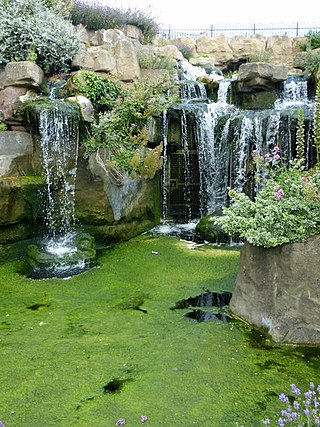
Pulhamite was a patented anthropic rock material invented by James Pulham (1820–1898) of the firm James Pulham and Son of Broxbourne in Hertfordshire. It was widely used for rock gardens and grottos.

James Pulham and Son was a firm of Victorian landscape gardeners and terracotta manufacturers which exhibited and won medals at London's Great Exhibition of 1851 and 1862 International Exhibition.

Pearson Park, originally known as the People's Park is a park in the west of Kingston upon Hull, England. It is situated about 1 mile (1.5 km) north-west of the city centre of Hull with its main entrance on Beverley Road and its western boundary adjoining Princes Avenue.

Worth Park is in Pound Hill, Crawley. The park covers eight hectares and includes formal gardens, and a lake area.

The Old Steine Gardens in Brighton, Brighton and Hove, East Sussex, England, adjacent to the Old Steine thoroughfare, are the site of several monuments of national historic significance.

St Leonards Park is a heritage-listed bowling club, 15-hectare (37-acre) urban park, rugby field and cricket oval at 283a Miller Street, North Sydney, North Sydney Council, New South Wales, Australia. It was designed by William Tunks, Mayor and built during 1838. It was added to the New South Wales State Heritage Register on 31 July 2015.

Burslem Park is a public park in Burslem, Stoke-on-Trent, Staffordshire, England, operated by Stoke-on-Trent City Council. It was opened in 1894, and is essentially unchanged from the original layout. It is listed Grade II* in Historic England's Register of Parks and Gardens.


























